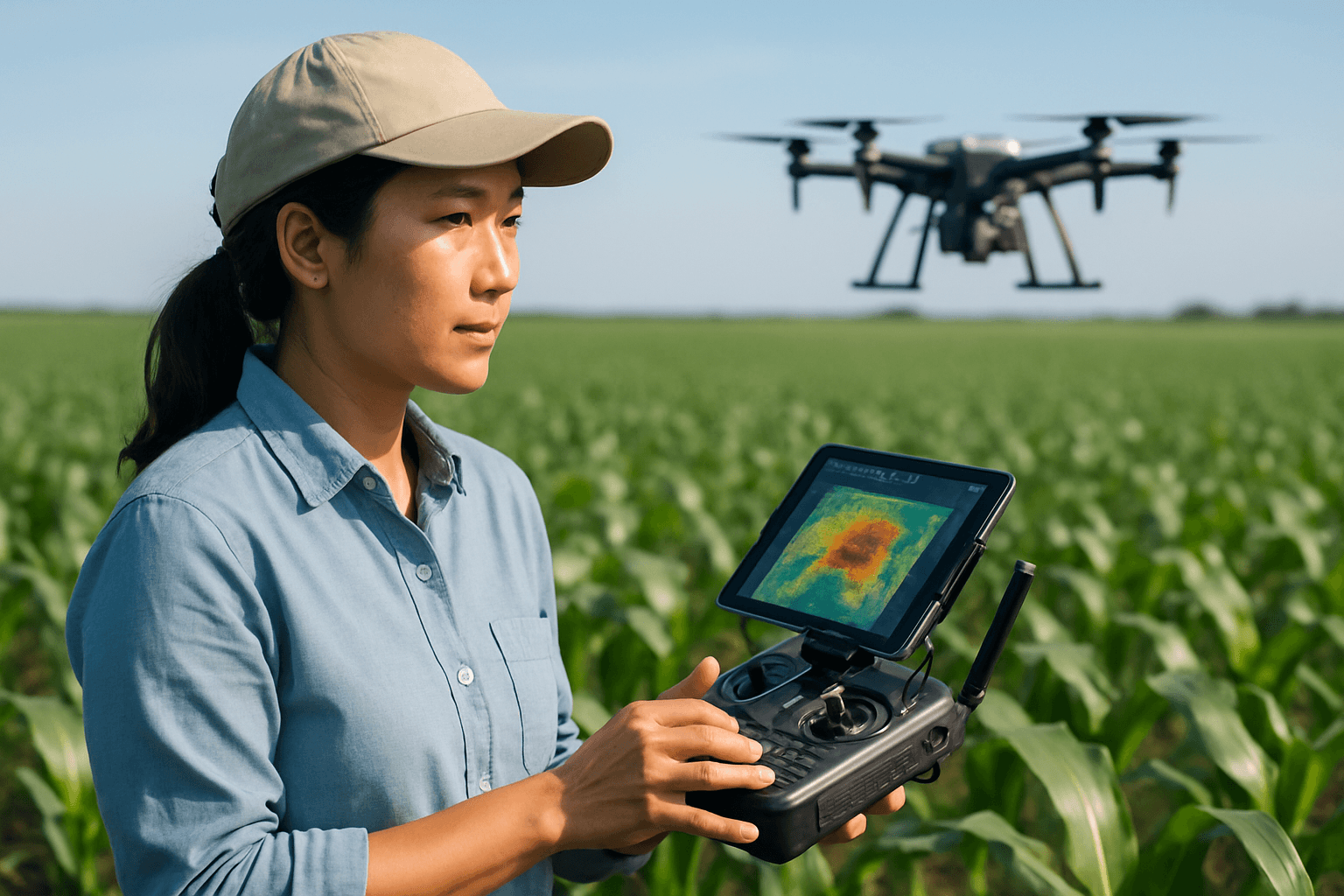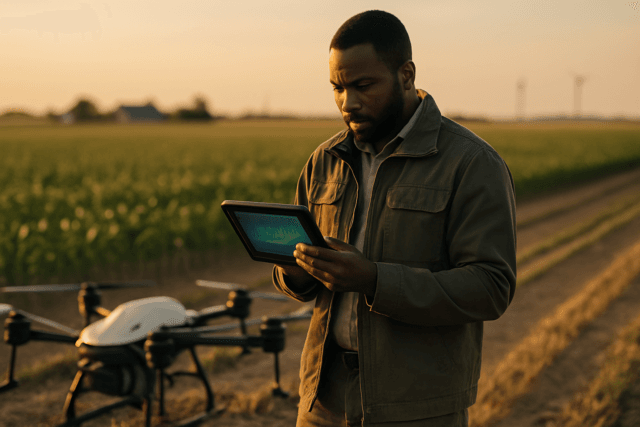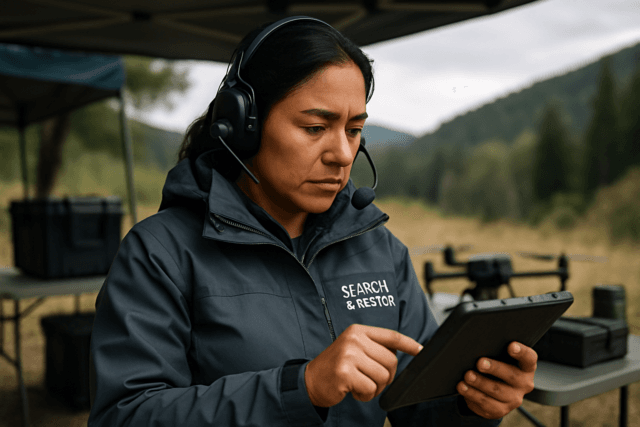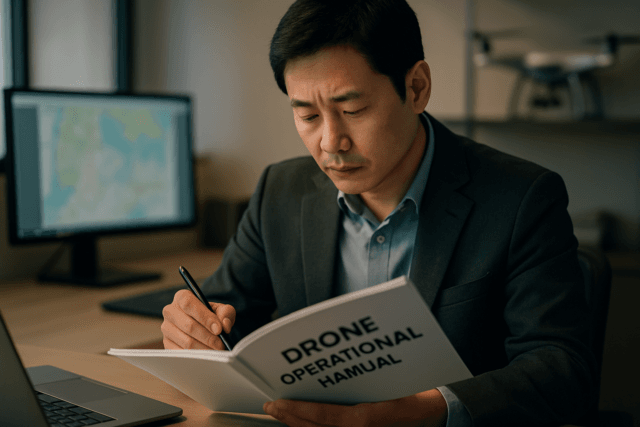The silent threat of plant diseases looms large over global food security, annually claiming up to 40% of crop production and costing the global economy an estimated $220 billion. Traditional methods of identifying these agricultural scourges, such as manual visual inspection, serological, or molecular diagnostics, are often labor-intensive, time-consuming, and frequently ineffective in the crucial early stages when symptoms are not yet visible to the naked eye. However, a new guardian has emerged in the agricultural landscape: drones. Equipped with advanced sensor technology and powered by artificial intelligence, these unmanned aerial vehicles (UAVs) are rapidly transforming how farmers monitor crop health, offering an unprecedented ability to detect diseases precisely and efficiently at their earliest onset.
The Imperative of Early Crop Disease Detection
Plant diseases pose a significant and constant threat to stable and reliable crop productivity, impacting yield quality and overall food supply chains. The ability to identify diseases before they spread widely is paramount, as late detection can lead to increased crop losses, higher pesticide costs, and environmental damage from extensive chemical use. Conventional approaches struggle to provide the high spatial resolution and rapid assessment needed for large agricultural areas, often leading to delayed interventions that compromise yields. This critical gap is where drone technology shines, offering a scalable, efficient, and accurate solution for modern agriculture.
How Drones Uncover Hidden Plant Stress
Drones are more than just flying cameras; they are sophisticated data collection platforms equipped with a suite of sensors designed to peer beyond visible light and detect subtle physiological changes in plants indicative of stress or disease.
Advanced Sensor Technologies
The effectiveness of drones in disease detection hinges on their diverse payload of specialized sensors:
- Multispectral Cameras: These cameras capture light in specific visible and non-visible spectral bands, such as near-infrared. Healthy plants reflect near-infrared light strongly due to their cellular structure and chlorophyll content, while diseased or stressed plants show a significant decrease in this reflection. This data is crucial for generating vegetation indices like the Normalized Difference Vegetation Index (NDVI).
- Hyperspectral Cameras: Taking multispectral imaging a step further, hyperspectral cameras capture data across hundreds of narrow, contiguous spectral bands, allowing for even more detailed spectral analysis. This provides a rich “spectral signature” that can pinpoint specific disease types or nutrient deficiencies.
- Thermal Sensors: These sensors measure temperature differences across the field. Diseased plants often exhibit altered transpiration rates or metabolic activity, leading to variations in leaf and canopy temperature. Thermal imaging can detect these temperature anomalies, signaling stress before visible symptoms appear.
- RGB Cameras: Standard high-resolution Red, Green, Blue cameras capture visual data that, when processed, can reveal visible signs of damage, discoloration, or unusual patterns once symptoms have progressed.
- LiDAR (Light Detection and Ranging) Sensors: LiDAR uses laser beams to create detailed 3D maps of the crop canopy, providing information on plant height, canopy density, and structural attributes. This data can help assess the spatial distribution of crop health and identify areas where growth patterns are abnormal due to disease.
Data Collection and Analysis for Disease Identification
Drones fly over fields in predefined paths, collecting vast amounts of data tagged with GPS information. This raw data then undergoes sophisticated analysis using specialized software, often leveraging Artificial Intelligence (AI) and Machine Learning (ML) algorithms.
- Vegetation Indices (e.g., NDVI): NDVI is a widely used method for monitoring crop health. It analyzes the difference between near-infrared and red light reflectance. A drop in NDVI values often signals fungal infection, bacterial diseases, or insect infestations by indicating reduced chlorophyll content and overall plant stress.
- Image Processing and Machine Learning: Algorithms, including Convolutional Neural Networks (CNNs) and Vision Transformers (ViTs), are trained on extensive datasets of healthy and diseased plant images to recognize patterns, textures, colors, and shapes associated with various pathogens. These models can identify disease symptoms with high accuracy, often exceeding 95% for specific diseases.
- Edge Computing: For rapid decision-making, especially in precision pesticide application, some systems utilize edge computing, processing image data directly on the drone or nearby hardware rather than relying solely on cloud computing, thereby reducing latency.
Tangible Benefits of Drone-Based Early Detection
The integration of drones into agricultural practices provides a multitude of advantages for disease management:
- Proactive Intervention and Reduced Crop Loss: Drones enable farmers to identify subtle changes in crop health that are invisible to the human eye, allowing for preventative measures long before visible symptoms like discoloration or wilting appear. This early detection is crucial for preventing widespread crop damage and mitigating significant yield losses.
- Precision Agriculture and Targeted Treatment: By pinpointing exact locations of disease outbreaks, drones facilitate targeted interventions. Farmers can apply fertilizers, pesticides, or other treatments precisely where needed, rather than broadcasting them across entire fields. This precision minimizes waste, lowers input costs, and reduces the environmental footprint of farming.
- Enhanced Efficiency and Coverage: Unlike manual inspections, which are time-consuming and labor-intensive, drones can rapidly scan vast areas of farmland, covering hundreds of hectares in minutes. This rapid assessment ensures comprehensive field coverage and provides real-time insights into crop conditions.
- High-Resolution and Consistent Data: Drones offer high spatial, temporal, and spectral resolution data, providing detailed and consistent crop monitoring across seasons. This enables more reliable and consistent disease monitoring, leading to better crop management and optimized yields.
- Data-Driven Decision Making: The extensive data collected by drones can be integrated with farm management systems, weather data, and ground-based sensors to provide a holistic view of plant health. This integrated data supports informed decisions for irrigation, fertilization, pest control, and developing effective crop improvement strategies.
Challenges and Considerations
Despite the transformative potential, the widespread adoption of drones for crop disease detection faces several hurdles:
- Initial Investment Costs: The upfront cost of acquiring advanced drones equipped with specialized sensors (multispectral, hyperspectral, LiDAR) can be substantial, posing an economic barrier for some farmers, particularly small and marginal ones.
- Data Management and Processing: High-resolution images and vast datasets generated by drone flights require significant storage, processing power, and specialized software for analysis. Farmers may lack the necessary computing resources or expertise to manage and interpret this data effectively.
- Weather Dependence: Drone operations are highly susceptible to adverse weather conditions. High winds, rain, and fog can hinder flights, affect image quality, and delay crucial disease detection and intervention.
- Regulatory and Safety Concerns: Drone operations are subject to various regulations concerning flight altitude, privacy, and safety, which can vary by region and require compliance.
- AI Model Training and Standardization: While AI models show high accuracy, they require extensive and standardized datasets that accurately reflect real-world agricultural conditions, which can introduce unpredictable factors like varying light, soil quality, and weather patterns.
The Future Trajectory of Drones in Agriculture
The future of agricultural drones is marked by continuous innovation and increasing integration into smart farming ecosystems.
- Advanced AI and Machine Learning: The trend towards integrating more sophisticated AI and ML models, including hybrid architectures, will lead to even more accurate disease classification and predictive capabilities, anticipating outbreaks based on historical data.
- Enhanced Connectivity and IoT Integration: Drones will increasingly integrate with a broader network of Internet of Things (IoT) devices, such as soil moisture sensors and weather stations. This interoperability will provide a holistic view of farm conditions, enabling remote control of irrigation, temperature, and soil conditions, and supporting real-time decision-making.
- Autonomous Systems and Swarm Technologies: The development of fully autonomous drones capable of operating without human intervention, along with swarm technologies where multiple drones work collaboratively, will significantly increase efficiency and coverage for large-scale farming operations.
- Accessibility and Affordability: As technology matures, drone systems are expected to become more affordable and accessible, making precision agriculture tools available to a wider range of farmers, including smaller farms.
- Standardization and Certification: Efforts towards standardizing drone manufacturing, performance, and sensor accuracy, along with standardized certification programs, will ensure consistent quality and ease adoption.
Conclusion
Drones have unequivocally proven their effectiveness in early disease detection in crops, marking a significant leap forward for precision agriculture. By leveraging sophisticated sensors and advanced data analytics, these aerial platforms can identify subtle signs of plant stress long before they are visible, enabling timely and targeted interventions. This capability not only helps mitigate devastating crop losses and reduces reliance on broad chemical applications but also boosts operational efficiency and promotes more sustainable farming practices. As technology continues to evolve and challenges are addressed, drones are set to become an even more indispensable tool, safeguarding global food security and shaping the future of farming.





